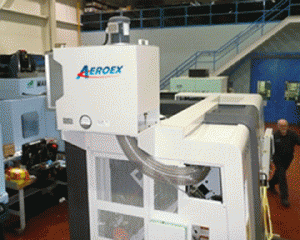 Two signs your mist eliminator and business’ bottom line are out of sync
Two signs your mist eliminator and business’ bottom line are out of sync
August 26, 2014 REDWIRE is news you can use from leading suppliers. Powered by FRASERS.
Posted by Aeroex Technologies Inc.
Oil Mist Separators Serving The Metalworking Industry... Read more
Subscribe
Free REDWIRE e-newsletter

Mist eliminators make lungs and the environment a happy place.
Since its creation more than 70 years ago, mist eliminators aim to reduce harmful inhalation and emission of contaminates inside industrial or manufacturing systems.
Over the years, environmental regulations continually require companies to follow increasingly stringent air pollutions standards. In order to consistently remove harmful particulate from industrial liquid and gas processes is through proper use of a mist eliminator.
Generally, mist eliminators do just that: they eliminate mist, or condensation, by filtering, separating and collecting adverse or damaging chemical and greehouse gas emissions released by machinery, including air scrubbers, cooling towers and ventilation equipment. For greater details on the mist eliminating process, visit Aeroex Technologies Inc.
But for now, breathe a sigh of relief once you spot and remedy the two signs that your current mist eliminator and business needs don’t jive.
Telltale sign no. 1 – You rely solely on filters to remove mist
Choose a mist eliminator that eliminates both mist and filters.
Where other technologies and designs fall short, select an advanced mist eliminator providing exceptional fluid drainage for high mist applications separating 90 to 95% of mist without filters.
Telltale sign no. 2 – Depending solely on plant air quality
Empower yourself with this simple mantra: “exhaust mist, not water mist, reigns supreme.”
Consumers are misled to think mist eliminators removing 99% of water droplets from the air is a phenomenal win.
Not so.
Exhaust mist measurement is what matters. Get a mist eliminator cleaning the air of mist, smoke and bacteria exceedingly greater than the industry standard.
For example, the recommended plant limit is 0.5mg/m3.
Instead, cherry pick a mist extractor delivering a better result, such as levels as low as 0.020 mg/m3.
In other words, mg/m3 equals milligram (mg) per material per cubic metre of air (m3); this metric measurement is a weight/volume ratio gauging concentration levels between airborne chemicals of either liquid, gas or vapours to air.
Less is more, meaning you want the second ratio. Your lungs and the environment, over time, will thank you.
Save not only the life of your valued employees by improving air quality at work, but also save on operating and maintenance costs by extending mist eliminator life cycles (by at least a decade) with Aeroex mist eliminator solutions.
Share
Posted by Aeroex Technologies Inc.
Oil Mist Separators Serving The Metalworking Industry... Read more